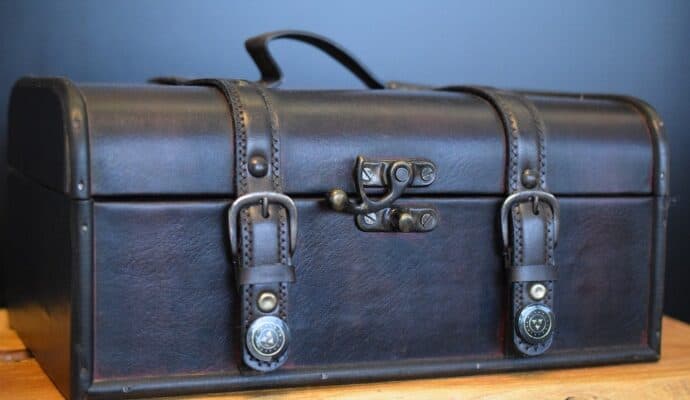Have you ever wondered what’s in a midwife’s bag? Here we provide a closer look at a few of the essential items she carries for labor and delivery so you’ll know them when you see them.

4 Important Things You’ll Find in Your Midwife’s Bag
Upon hiring and calling a midwife, you may wonder what exactly she will do for your labor and delivery or what she carries in her bag. There are various things a midwife may choose to carry, but overall, some supplies play more significant roles than others. In this article, we discuss the high-priority items you can expect to find in your midwife’s bag and help you understand their general purposes.
Side note: When I was pregnant with my daughter, I wanted to know everything I possibly could before labor and delivery. For me, delving into all the information was calming and it made me more comfortable learning about procedures, instruments, and the process itself. This post was written for moms-to-be that have that same need to know.
A Manual Fetoscope
Every mother has a choice on the type of intervention and style of labor and delivery she wishes to receive. For some, being as “natural” as possible is a priority. Many midwives will carry a manual fetoscope, which allows them to listen in on the baby without electronic or battery-operated devices.
A midwife may also carry a Pinard horn, which is another listening device for finding the baby’s heartbeat. It is relatively common for a midwife to offer the Pinard horn to the laboring mother’s partner to create a more interactive experience.

Professional-Grade Doppler
There are instances where manual fetoscopes are not sufficient to gauge a situation. In these cases, midwives will use a professional-grade fetal doppler to listen to the baby. There are also cases where a mother has no preference on the levels of intervention she receives and wishes to hear the baby’s heartbeat during an appointment. A midwife can use her doppler to record the sounds for everyone to hear.
I always found it very satisfying to hear my daughter’s heartbeat when I was pregnant, honestly. It was reassuring, soothing, and at the same time exhilarating to know she was healthy and happy and it always made me smile.
Bulb Syringes
If the midwife is attending a birth, she will almost always carry bulb syringes in her bag. These will play vital roles in post-delivery measures to clear the baby’s airways and nasal passages so they can take their first breath of air with an unobstructed path.
It’s essential to note that sometimes a bulb syringe is not necessary, and the baby can take their first breath unassisted.
Cord Supplies
Another vital part of a midwife’s bag is cord supplies. This will include scissors, two clamps, ties, and a placenta bag. It’s possible there will be a cord burning kit, depending on the mother’s wishes for the cord and placenta.
The midwife and the mother will mutually agree on suitable measures for the placenta and cord once the mother delivers. Regardless of cord clamp timeframes, these supplies are vital to a safe and effective release of the placenta. The clamping procedures must be correct and sterile.
A midwife can choose the most effective items to carry in her bag, depending on what helps her or what the mother has requested. It’s essential to trust the midwife to do her job and trust that her bag contains the items that will help you and your baby in safe labor and delivery.
